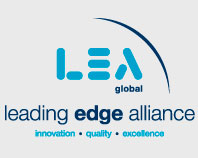The practice of transfer pricing involves assigning value to goods, services, and intangible property traded between legally distinct but related entities under a common control and is deeply rooted in the “arm’s length” principle where the price of the transaction should reflect what a similar transaction would trade for in the open market. Transfer pricing is intended to ensure that related parties transact as they would be between independent entities, preventing profit shifting and base erosion. In today’s globalized economy, transfer pricing is an increasingly key aspect in developing and maintaining operational and financial strategies for multinational corporations but presents a unique set of challenges that can complicate financial and tax planning. Below are a list of common transfer pricing challenges and strategies for overcoming them.
Common Transfer Pricing Challenges
-
Challenge #1: Complex Global Networks
Companies are often faced with navigating a maze of transactions across subsidiaries and divisions that span multiple tax jurisdictions. With every country and jurisdiction having its own rules and regulation for transfer pricing, the intricate interplay of these regulations can lead to conflicts between tax authorities’ interpretations of transfer pricing laws, potentially resulting in double taxation or costly legal disputes.
Solution:
A robust transfer pricing policy is the backbone of any multinational company’s compliance framework. A transfer pricing policy should encapsulate the company’s approach to transfer pricing and serve as a reference document for all intercompany transactions. A transfer pricing policy should be comprehensive, reflecting a deep understanding of local-country transfer pricing rules and regulations and the overarching, globally accepted, arm’s length principle. Second, the policy must be dynamic, allowing for adjustments in response to legislative changes, business environment shifts, and company operations restructuring. Third, a transfer pricing policy serves as evidence of the company’s intent to comply with global transfer pricing rules and relations, which can be crucial in disputes with tax authorities.
2. Challenge #2 Compliance with Documentation Requirements
Tax authorities globally have ramped up their requirements for transfer pricing documentation to combat tax evasion and ensure that companies pay their fair share of taxes. These extensive and diverse documentation requirements necessitate a detailed explanation of the rationale behind the pricing of inter-company transactions. Multinational corporations are required to compile comprehensive reports that often include complex functional, industry, and economic analyses justifying the transfer pricing methods employed. The administrative burden of this compliance is non-trivial and requires a strategic approach to documentation policy and practice.
Solution:
Proactively preparing transfer pricing documentation to evaluate the arm’s length character of intercompany transactions. In addition, the effort to produce annual compliance documentation produces a wonderful externality for multinationals because regular evaluations of a companies’ transfer pricing risk profile can unveil exposures in the strategy, providing an early warning system for potential compliance issues related to changes in legislation, shifts in the character or terms of intercompany transactions, and adjustments in business strategy. By identifying risks early, companies can take corrective actions, such as adjusting transfer prices or revising contracts, to manage potentially costly tax transfer pricing risk issues.
Technology may also play a role in overcoming compliance-related challenges inherent to producing annual documentation. High-quality data is the foundation of any transfer pricing analysis, and technology solutions can ensure that data is collected efficiently and analyzed effectively. Software tools can automate the calculation of transfer prices, maintain contemporaneous documentation, and monitor compliance with internal policies and external regulations. They also provide the agility to respond to real-time market conditions and regulatory changes, making compliance a dynamic and integral part of business operations.
Transfer Pricing is a complex topic, our team can guide you through it.

3. Challenge #3: Fluctuating Market Conditions
Economic dynamics are in constant flux, and transfer pricing strategies that were compliant and effective in one fiscal period may need to be updated as market conditions change. Currency fluctuations, changes in supply and demand, and economic disruptions like those caused by political events or pandemics can all affect the validity of transfer pricing methods.
Solution:
Advance Pricing Agreements offer a proactive means of mitigating transfer pricing disputes. They are formal contracts between a company and one or more tax authorities, establishing the methodology for determining transfer pricing for transactions over a fixed period. APAs can significantly reduce the risk of future adjustment by tax authorities, providing predictability in tax outcomes and aiding in financial planning. They can also streamline or eliminate the need for transfer pricing documentation, as the agreed-upon methodology is pre-approved by the tax authorities.
4. Challenge #4: Diverse Transfer Pricing Methods
There is no one-size-fits-all solution in transfer pricing; instead, there is a spectrum of approaches that can be applied to evaluate the arm’s length character of a transfer pricing policy. Each approach has strengths and weaknesses and suits different transactions and business arrangements. Choosing the optimal transfer pricing method requires careful consideration of several key factors. It’s important to look at the specifics of the transaction in question, what comparable market data is accessible, the functions each party to the transaction performs, and the levels of risk they’re taking on. The decision is somewhat of a balancing act, with significant implications for the company’s tax liabilities and its relationship with tax regulators.
Solution:
Embrace the challenge as an opportunity! Having a wide spectrum of approaches to evaluate the arm’s length character of a transfer pricing policy can be a valuable tool for companies to utilize to manage their operations and tax exposure.
Conclusion
Bennett Thrasher’s experienced transfer pricing experts will work directly with you to establish effective transfer pricing practices and strategies that are both compliant and advantageous for your business.
Bennett Thrasher’s Transfer Pricing professionals can help you navigate global risks and opportunities by:
- Planning: Working with you to review or design your company’s policies related to the intercompany transfer of goods, services, and intangibles across borders by conducting value chain analyses, characterizing entities functional profiles, and determining appropriate pricing models.
- Documentation:Preparing transfer pricing documentation to evaluate the arm’s length character of intercompany transactions. We prepare documentation for U.S. companies based on the U.S. transfer pricing regulations as well as for companies operating in dozens of jurisdictions across the globe based on local country rules and regulations. Documentation for companies outside the U.S. often are in the format of a Master File and Local File, as outlined in the OECD Guidelines.
- Benchmarking and Valuation:Identifying appropriate arm’s length pricing for the transfers of tangible property, services and intangible property (e.g., trademarks and trade names, software rights, patents, manufacturing know-how, etc.).
- Intercompany Financing:Performing debt capacity, creditworthiness, and interest rate benchmarking studies to appropriately determine arm’s length pricing for intercompany financing arrangements.
- Implementation:Turning transfer pricing recommendations into actionable policies and procedures for ongoing operational purposes, financial reporting, and tax compliance.
- Advance Pricing Agreements (APAs):Assisting with the negotiation of APAs with the IRS and foreign tax authorities to avoid potential future disputes.
- Controversy and Audit Support:Defending transfer pricing positioning in U.S. and foreign tax audits and supporting clients through Mutual Agreement Procedure and Competent Authority processes.
We’re Here to Help
Bennett Thrasher’s transfer pricing practice is well-positioned to assist taxpayers in developing and implementing transfer pricing policies that are formalized by transfer pricing agreements. For more information, please contact Benjamin Miller, Tax Partner, or Sarah Norwood, Transfer Pricing Manager. Or call 770.396.2200.



